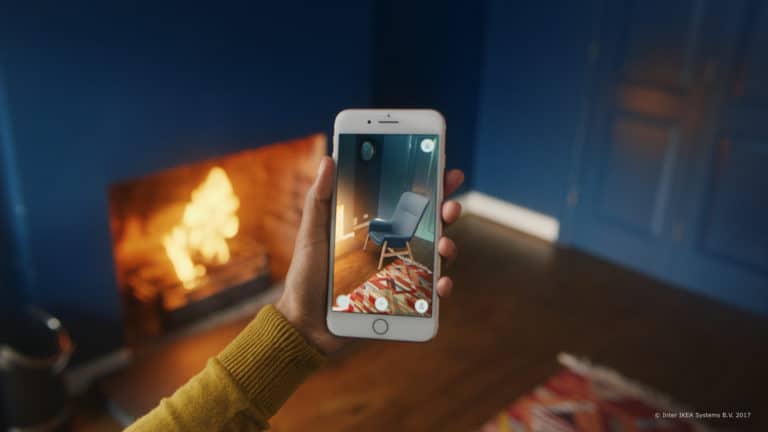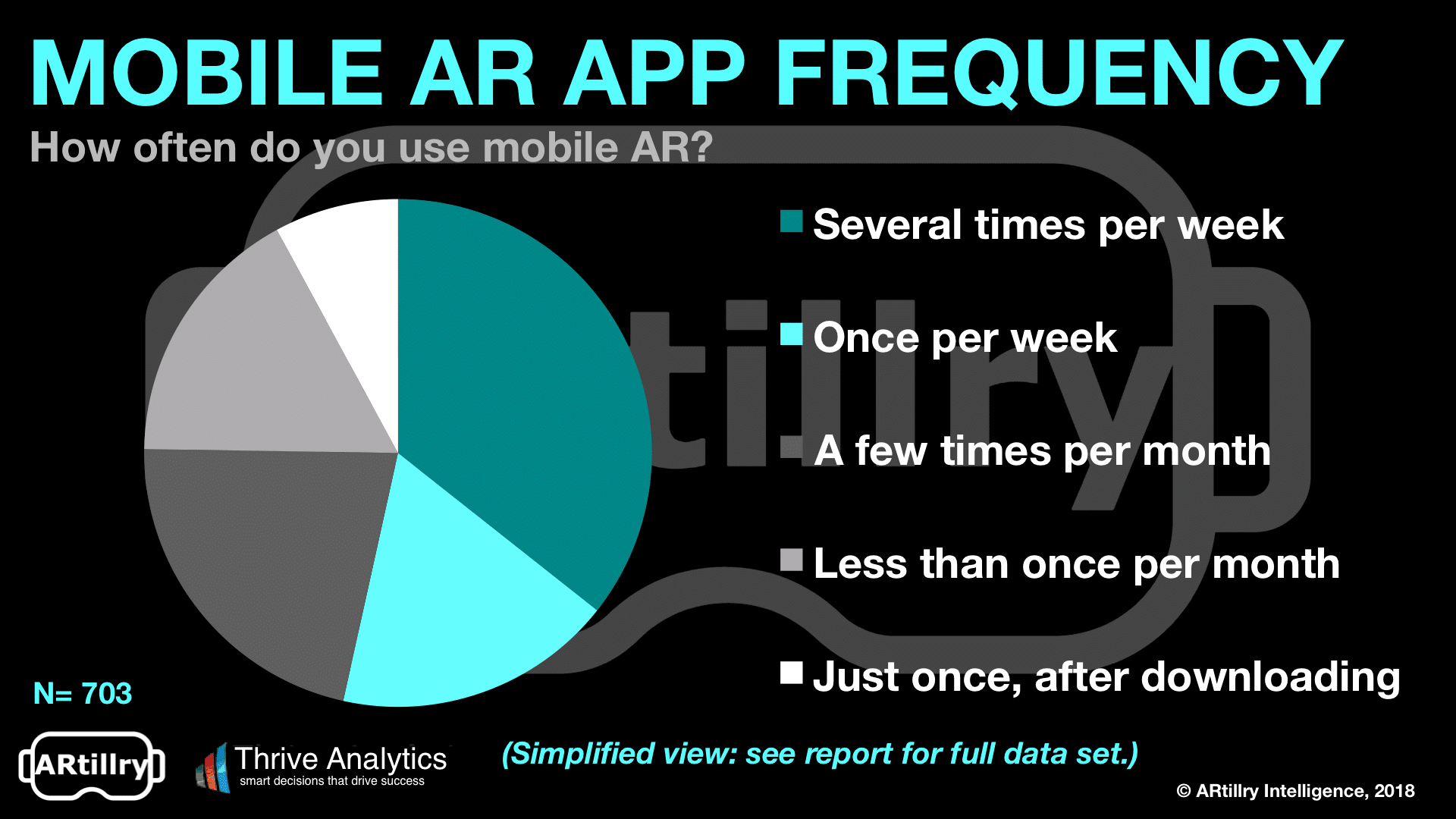
This post is adapted from an article that appeared in Street Fight, written and contributed by this post’s author. It has been modified for ARtillry’s audience, and outlines a recent report that can be further previewed here.
Amid our ongoing coverage of AR’s potential impact on the future of local commerce, it’s important to stop and ask how consumer adoption is coming along so far. With lots of industry rhetoric about life-changing technology, sometimes a reality check is in order.
ARtillry Intelligence recently paired up with Thrive Analytics to do just that. We fielded a survey to 2000 U.S. adults regarding AR use, hopes, and dreams. The results are in and are telling of AR’s strengths, soft spots, and business opportunity. The outcome: There’s good news and bad.

The “How Often?”
Starting at the top, 32 percent of respondents use mobile AR. This is a positive sign, representing a combination of healthy adoption (considering the early stage) and room to grow. And we believe usage levels will accelerate in future surveys, similar to early smartphone adoption.
But the quantity of users alone is a binary figure. Either someone has used AR (at least once) or they haven’t. To provide more granularity, how often are they using it? This gets to a key metric in mobile apps, which is to set aside download metrics and instead focus on active users.
On that measure, 66 percent of mobile AR users are active at least monthly. Going one level deeper, 54 percent use mobile AR at least weekly. Only eight percent used AR just once, indicating that the active-use challenges endemic to mobile apps aren’t as great in AR.
Such favorable responses are surprising, as the appeal of mobile AR apps we’ve examined lies mostly in novelty. AR is attractive for that reason, but the novelty can wear off quickly. This means companies should build experiences that offer inherently sticky components like social interaction.

The “What?”
That brings us to the matter of what types of apps are being used. Not surprisingly, games (à la Pokemon Go) and social apps (à la Snapchat) lead the pack. But there’s lots of promise in some of the app categories that feed into local commerce such as city guides and in-store retail apps.
Perhaps more important than consumers’ current usage is their demand for what comes next. Gaming was again the clear winner there, followed by education and product visualization. But here, we also see new categories emerge, such as local commerce apps.
These include city guides, sports, and retail. City guides and retail align well with AR, given the potential to overlay product info like reviews and promotions. Moreover, they’re monetizable and tap into the same out-of-home purchase intent that fuels mobile local search today.
AR sports apps also hold interesting local commerce and media implications: Team owners can create more compelling arena experiences, such as player stats and in-game entertainment. Broadcasters can also battle cord-cutting with compelling “second-screen” mobile AR features.

The ‘How Good?’
Lastly, there’s an important lesson: AR users like what they see, with a whopping 73 percent reporting high or very high satisfaction. But non-users report explicit disinterest, with the biggest reason being “just not interested.” This presents a big hill for AR app developers to climb.
In fact, the disparity between current-user satisfaction and non-user disinterest underscores a key challenge for XR: you have to “see it to believe it.” To reach high satisfaction levels, apps have to be tried. This presents marketing and logistical challenges to cultivate that initial taste.
Put another way, AR’s highly visual and immersive format is a double-edged sword. It can create strong affinities and engagement levels. But the visceral nature of its experience can’t be communicated to prospective users with traditional marketing like ad copy or even video.
That’s where the good news/bad news comes in. AR could transform commerce, given ability to shorten gaps between digital interactions and transactional outcomes. But it will take a while to reach ubiquity. Plan product road maps and go-to-market strategies accordingly.
More can be previewed here, or subscribe to access the full report
For deeper XR data and intelligence, join ARtillry PRO and subscribe to the free ARtillry Weekly newsletter.
Disclosure: ARtillry has no financial stake in the companies mentioned in this post, nor received payment for its production. Disclosure and ethics policy can be seen here.
Header Image Credit: IKEA
